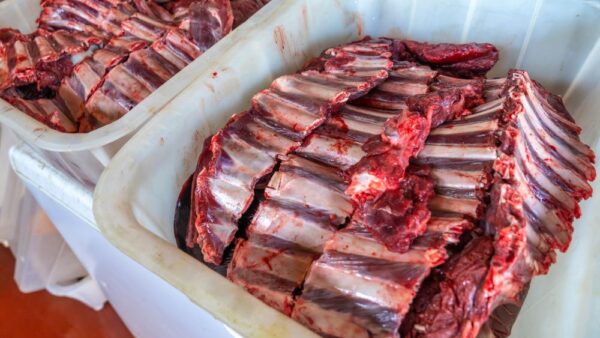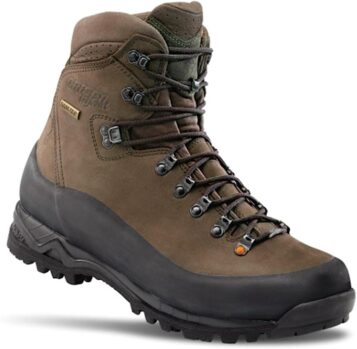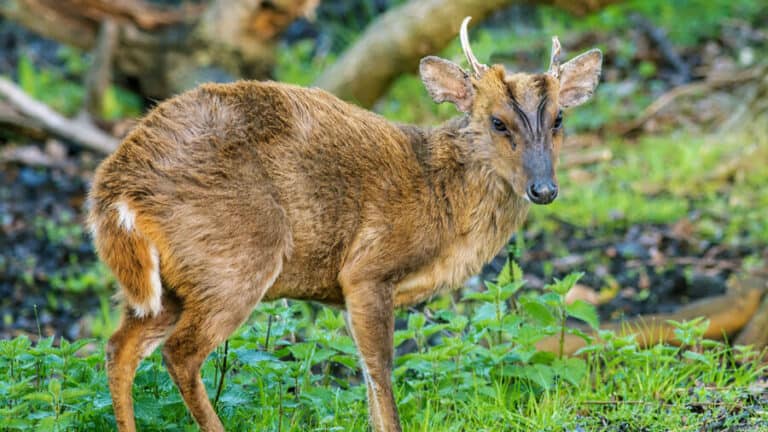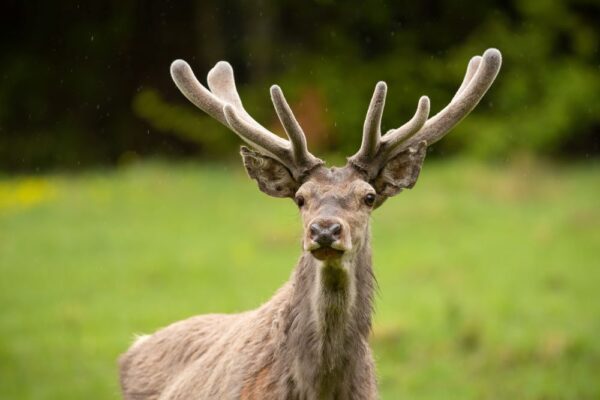Understanding the nuances of deer poop can provide a wealth of information for hunters, wildlife enthusiasts, and ecologists alike. Not only does it give us a peek into the well-being and behavior of these curious creatures, but it also helps us follow their movements.

In this post, we’ll debunk myths about identifying bucks by their droppings and explore how the frequency of fresh piles could indicate local population density.
We will delve into decoding information from deer scat, such as age determination through coloration and moisture level, and analyze dietary habits based on the contents of droppings.
Moreover, you’ll learn how microscopic examination can give a detailed analysis of deer feces. Lastly, we’ll discuss what abnormal droppings might reveal about a deer’s health status.
The Importance of Deer Droppings
When it comes to hunting, every little detail counts. And yes, that includes deer droppings. Don’t turn up your nose yet – these small pellets from nature can provide valuable insights into local deer populations and their behaviors.
Debunking Myths About Deer Scat
Forget what you’ve heard about identifying bucks by the size of their poop. It turns out size doesn’t matter when it comes to pellets. Studies have shown that buck and doe droppings are the exact sizes, so don’t let the poop fool you.
But don’t despair. While size might not be the key, other factors should be considered. Pay attention to the droppings’ frequency, location, color, and contents – they can still give you valuable information for your hunt.
Fresh Piles of Deer Pellets and Population Density
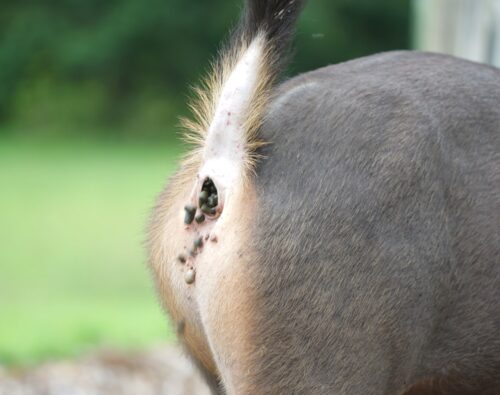
If you’re stumbling upon fresh piles left and right, it’s a sign that the local deer population is thriving. If you’re not spotting any recent droppings, it could indicate that the deer numbers in your area are decreasing.
But wait, there’s more. The frequency of fresh piles can also reveal the regular routes used by deer. Knowing where they like to hang out, feed, and rest can give you a leg up on your hunting game.
Decoding the Secrets of Deer Poop
It’s time to dig deeper into the world of deer poop. By paying attention to different characteristics, we can uncover a wealth of information about their lifestyle habits throughout the year. From changes in diet to potential health issues, deer droppings can tell us a lot.
So, next time you come across a pile of deer pellets, don’t just brush it off. Take a closer examination of the droppings and uncover what they can tell you. And remember, knowledge is power in the world of hunting.
Determining Age Through Coloration and Moisture Level
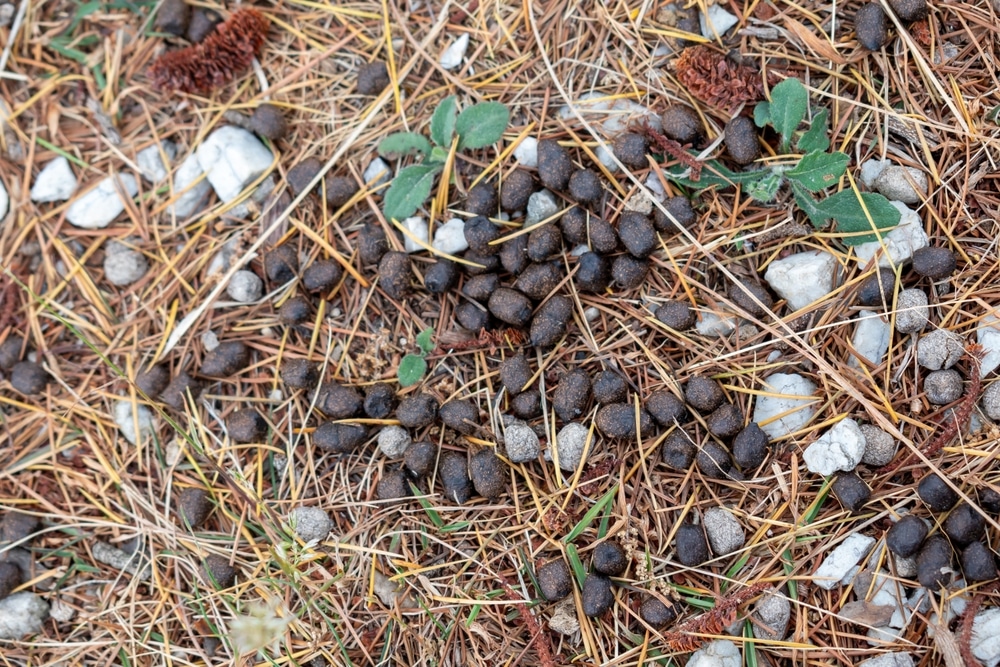
The color and moisture level in deer poop can tell you if it’s fresh or ancient. Fresh droppings are dark brown or black, like a moist chocolate cake. As they dry out, they turn into a dull grayish-brown hue, like a sad, forgotten cookie.
Fresh pellets are moist and shiny, but as they dry, they lose their sparkle. This transformation tells you when the deer was last active in the area – crucial info for your hunting plans.
Analyzing a Deer’s Diet Based on Contents
Deer diet changes with the seasons, so examining their droppings is like a culinary adventure. In spring, you’ll find remnants of budding plants like clover or alfalfa, indicating fresh growth consumption. It’s like finding a salad in their poop.
Summer: The presence of grass seeds suggests they’re grazing during warm weather, like deer enjoying a picnic in the park.
Fall: Bits of acorns or corn kernels hint at their preparation for winter, like stocking up on snacks before hibernation.
Winter: Pine needles or dark brown pellets suggest they use less nutritious options, like eating tree decorations.
But if you notice drastic shifts in their diet, it could mean they’re facing environmental stressors, and their health might suffer—poor deer.
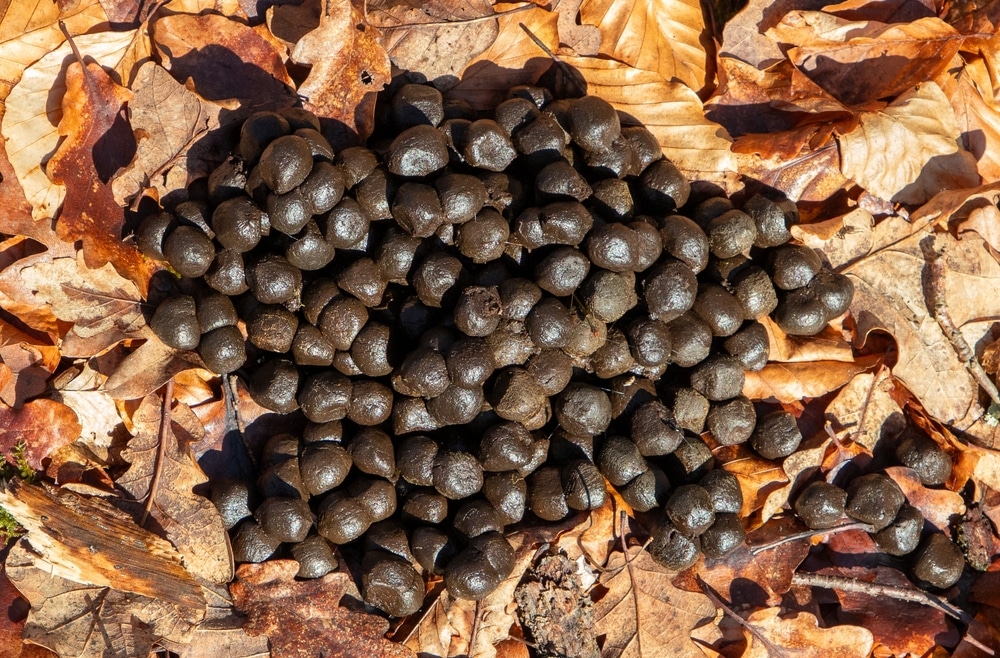
Using Microscopic Examination for Detailed Analysis
Hunting is more than an exciting pursuit; it’s a scientific endeavor. Skilled hunters can gain an advantage over their peers by scrutinizing the small details with microscopic examination.
One such detail that often goes unnoticed is deer scat. Believe it or not, these tiny pellets, under their unassuming exterior, hold information.
A microscopic examination of deer scat can reveal what types of plants they have been eating. This knowledge can be instrumental in planning your hunting strategy as it allows you to predict where the herd might move next based on food availability.
Identifying Plant Species Consumed by Deer
To identify plant species from droppings, first collect fresh samples and then prepare them for microscopy following standard protocols like those outlined in this research paper.
You’ll need access to a microscope with at least 400x magnification power.
Fibrous Material: If you see fibrous material under the lens, this indicates that the deer have been feeding on woody plants or grasses.
Pollen Grains: Pollen grains suggest that flowering plants are part of its diet.
Plant Cells: Different types of plant cells will tell you more specifically what kinds of vegetation make up their diet – leafy greens vs. roots, for example.
The Role Of Seasonal Changes In Deer Diet
In addition to identifying specific plant species consumed by deer, microscopic analysis can provide insights into how dietary habits change with seasons. For instance:
When new growth is abundant in spring and summer, expect to find fragments from tender leaves and shoots in their droppings.
When greenery becomes scarce in fall and winter, evidence suggests that people consume bark, twigs, or even crops if they are available nearby.
Baiting Strategies Based On Dietary Habits
Suppose your goal is baiting rather than tracking down herds directly through stalking methods; understanding preferred foods among specific groups living nearby aids tremendously in planning strategies accordingly.
For example, if microscopic examination reveals high amounts of corn remnants, setting up baits near cornfields would yield better results than random locations within woods without any particular reasoning behind the choice selection.
Similarly, knowing seasonal changes helps too – during winters, consider using bait mixtures rich in fats and proteins since natural sources providing these nutrients become hard for deer to find outdoors due to harsh weather conditions.
While all the techniques mentioned above require time investment and some technical skills, the rewards of successful hunts are well worth the effort required to master them.
Health Insights Gleaned From Abnormal Droppings
As hunters, we focus on deer size and numbers, but the herd’s health also matters. Abnormal droppings can reveal important health information. Look out for blood or mucus content; it could mean internal bleeding or infection.
Detecting Health Issues Through Deer Poop
Blood or mucus in droppings may indicate health problems. It could be a sign of internal bleeding or infection. These substances might also suggest gastrointestinal parasites, causing diarrhea and digestive issues in deer populations.
Identifying Parasite Infestation Through Deer Feces
White spots in the poop are eggs laid by parasites like tapeworms and roundworms. Symptoms of parasite infestation can be severe, ranging from weight loss to death.
Tapeworm eggs are tiny white specks, while roundworm eggs are slightly larger. Infected deer may have decreased appetite, increased thirstiness, coughing episodes, and tiredness.
Taking Action Against Diseases & Parasites
If you find signs of diseases or parasites in droppings, don’t panic. Contact your local wildlife agency for further investigation. Keep feeding areas clean to prevent the spread among herds.
Rotate locations regularly, especially with large groups. Practice responsible hunting methods and avoid shooting sick-looking individuals to prevent disease spread.
Regularly analyze fecal matter to ensure sustainable game populations and preserve ecosystem balance.

Frequently Asked Questions (FAQs)
What are some fun facts about deer poop?
Droppings can tell much about the local herd’s diet, health, and population density. For instance, oval-shaped pellets often indicate a diet rich in browse-like leaves and twigs.
Do droppings carry disease?
Yes, deer feces can carry diseases, including E.coli and other bacteria that may harm humans if not handled properly.
Is doe poop clumped together?
Buck poop and doe (female deer) poop are very similar. They are usually found as individual deer pellets rather than clumps. However, changes in diet can lead to more clumped droppings.
What does it mean when deer poop is clumped together?
If deer feces are found clumped together, this typically indicates that the animal has been consuming a high amount of moisture-rich food such as grasses or fruits.



